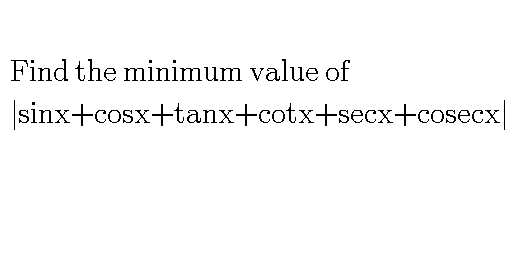
AllQuestion and Answers: Page 1459
Question Number 65690 Answers: 0 Comments: 2
Question Number 65687 Answers: 0 Comments: 0
Question Number 65683 Answers: 0 Comments: 0

Question Number 65681 Answers: 1 Comments: 0
Question Number 65680 Answers: 1 Comments: 0

Question Number 65679 Answers: 0 Comments: 2
Question Number 65678 Answers: 1 Comments: 1
Question Number 65677 Answers: 0 Comments: 0
Question Number 65676 Answers: 0 Comments: 1
Question Number 65675 Answers: 0 Comments: 0
Question Number 65674 Answers: 0 Comments: 1
Question Number 65673 Answers: 0 Comments: 1
Question Number 65665 Answers: 0 Comments: 1
Question Number 65664 Answers: 1 Comments: 0
Question Number 65724 Answers: 2 Comments: 0

Question Number 65723 Answers: 1 Comments: 0

Question Number 65700 Answers: 0 Comments: 1

Question Number 65651 Answers: 0 Comments: 1

Question Number 65704 Answers: 0 Comments: 1
Question Number 65601 Answers: 0 Comments: 1
Question Number 65593 Answers: 1 Comments: 5
Question Number 65592 Answers: 1 Comments: 0
Question Number 65587 Answers: 1 Comments: 4
Question Number 65589 Answers: 0 Comments: 8

Question Number 65581 Answers: 0 Comments: 1

Question Number 65580 Answers: 0 Comments: 0

Pg 1454 Pg 1455 Pg 1456 Pg 1457 Pg 1458 Pg 1459 Pg 1460 Pg 1461 Pg 1462 Pg 1463
